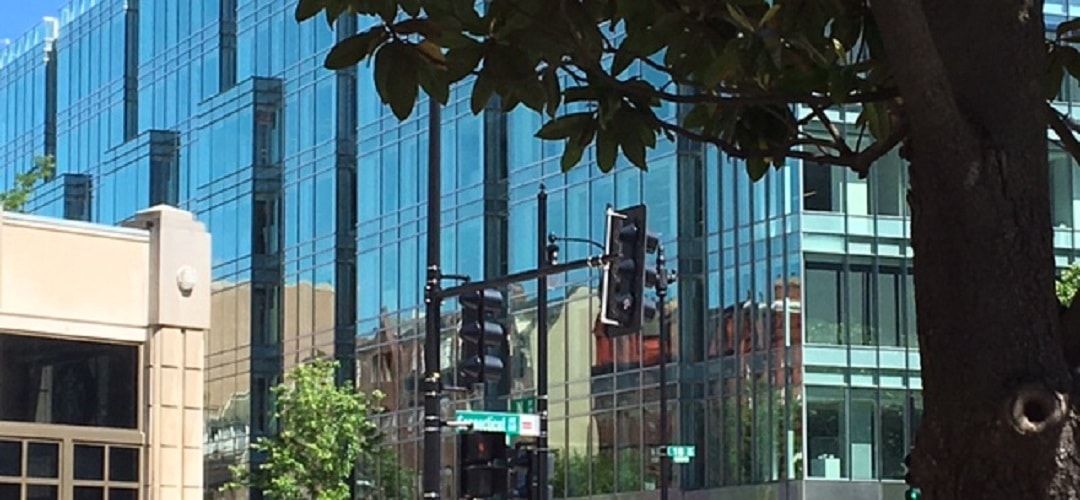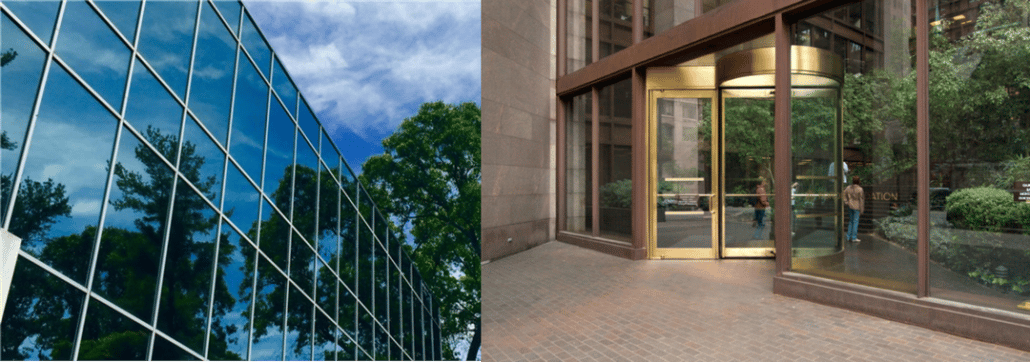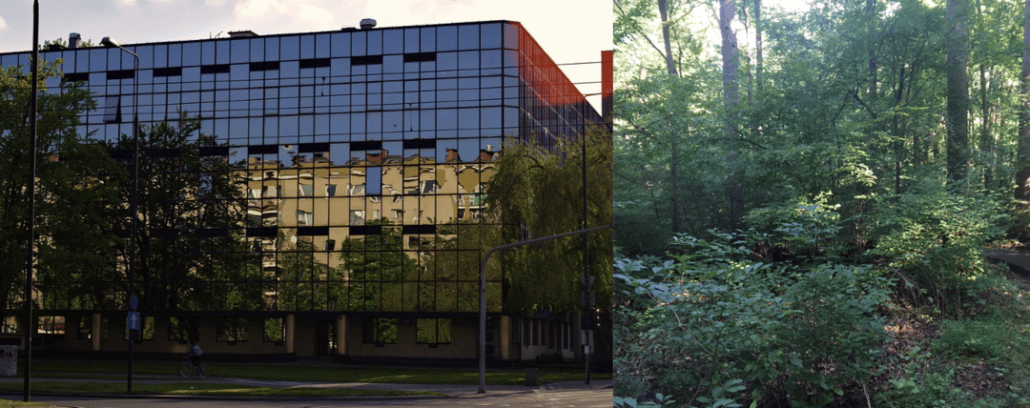GLASS
Birds, like humans, can not see glass. Collisions with glass on buildings and on homes is a leading cause of bird mortality, second only to habitat loss. Current estimates place the annual losses at 1 billion per year. Birds have evolved to navigate their environment at flight speed, making quick decisions, and perceive glass reflection, transparency, and passageways as open sky.
Glass may appear reflective or transparent depending on conditions and time of day. Both scenarios invite birds to fly toward the building as they search for food and cover.
Birds understand dark areas of glass to be passageways that they can fly through. The “passageway effect” is deadly for this reason.
We want a front row seat to nature, to observe and be part of the natural world even when we are inside. What we don’t want is a front row seat to the violent thud that will claim a healthy bird during prime breeding condition or a fledgling attempting it’s first migration. Rethinking glass and utilizing it’s incredible properties while making it safe for birds is possible. To help birds see the invisible threat we can:
- provide visual cues to birds to alert them to the presence of glass: ABC Suggestions
- take steps at home, especially during migration periods, to modify windows
- learn about the 2×4 rule and why it saves birds
When designing a home or building:
- Avoid over-use of glass – keeping glass to less than 40% of the overall surface area has a positive effect on bird mortality
- Use a smaller pane size – glass panes with less that 2.5 square meters inherently create grid line patterns that are sometimes visible to birds reducing risk of collision
- Use non-reflective glass options – opaque, etched, and patterned glass create a natural visible barrier for birds
- These must be applied in the first 2-3 stories of the building where reflectivity of surrounding environs is the greatest concern
- Any pattern must be no more than 4″ wide by 2″ tall to provide the necessary visual barrier
- UV patterned glass and fritted glass (with ceramic dots, lines, and patterns) provide visual cues to birds without a substantial impact to the view for humans
- Architectural features can also provide the necessary visual barrier to prevent collisions:
- Overhangs and balconies designed into the building provide a visual cue to birds
- Shutters, louvers, mesh, awnings, and films can be added post construction
- Landscaping in the immediate vicinity of glass can provide an area for birds to alight, slowing down their speed and preventing impacts




